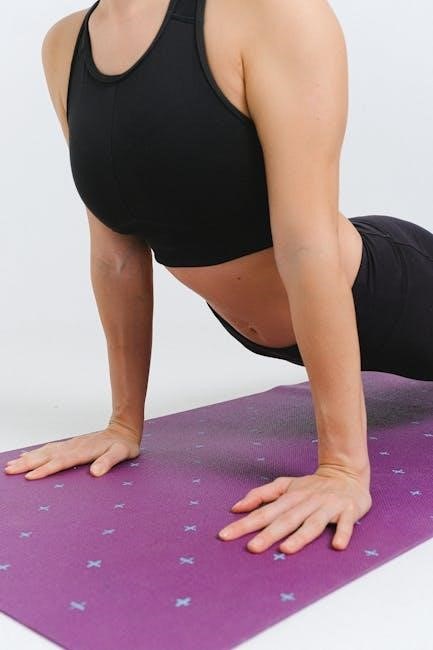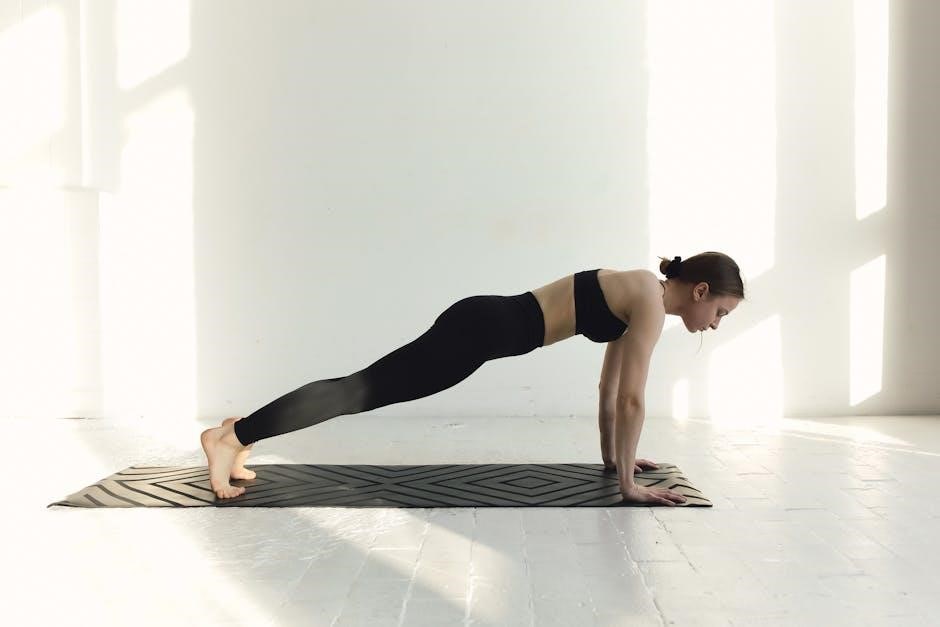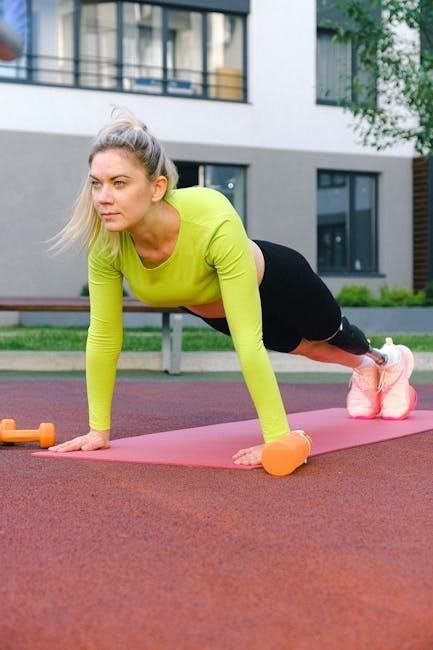push up workout pdf

Push-up workouts are one of the most fundamental and effective forms of exercise that target multiple muscle groups, making them a cornerstone of any fitness routine. Whether you’re a beginner looking to build strength or an advanced athlete aiming to increase endurance, push-ups offer a versatile and accessible way to improve overall physical fitness. This section will delve into the basics of push-up workouts, their benefits, and how they can be incorporated into your training regimen.

One of the key advantages of push-up workouts is their simplicity. Unlike many exercises that require specialized equipment, push-ups can be performed anywhere with just your body weight as resistance. This makes them an ideal choice for people who prefer home workouts or have limited access to gym facilities. Additionally, push-ups are a compound exercise, meaning they engage multiple joints and muscle groups simultaneously. This includes the chest muscles (pectorals), shoulders (deltoids), triceps, and core muscles, providing a full upper-body workout in a single movement.

For those new to push-up workouts, it’s essential to master the proper form to maximize effectiveness and minimize the risk of injury. A standard push-up begins with the body in a plank position, with hands slightly wider than shoulder-width apart and fingers facing forward or slightly inward. The feet should be hip-width apart, and the body should form a straight line from head to heels. Engaging the core muscles is crucial to maintaining stability and preventing the hips from sagging. Lowering the body until the chest nearly touches the ground, then pushing back up to the starting position completes one repetition.

Variations of push-ups allow individuals to tailor their workouts to suit their fitness level and goals. For beginners, modified push-ups on the knees can reduce the intensity while still engaging the target muscles. As strength and endurance improve, transitioning to standard push-ups and more challenging variations, such as decline or incline push-ups, can further enhance the workout. Advanced individuals might incorporate plyometric push-ups, also known as clapping push-ups, which add an explosive element to the exercise.

Incorporating push-up workouts into your routine can yield numerous benefits. Strengthening the chest, shoulders, and triceps can improve posture and overall upper-body aesthetics. Enhanced core stability from engaging the abdominals during push-ups can also improve performance in other exercises and daily activities. Additionally, push-ups are an excellent way to build muscular endurance, which is essential for sustained physical activity.

To get the most out of push-up workouts, consistency and progression are key; Setting achievable goals, such as increasing the number of push-ups performed in a row or mastering more challenging variations, can help maintain motivation and track progress. It’s also important to incorporate push-ups into a well-rounded fitness routine that includes exercises for other muscle groups to ensure balanced development.
